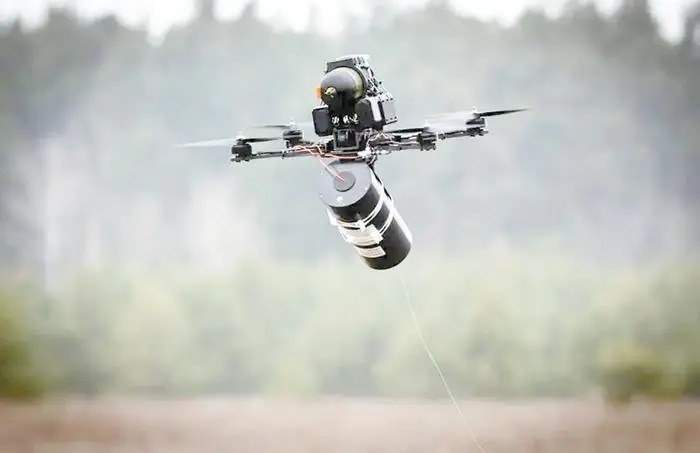Anti-Unmanned Information: Deep Analysis of the Three Major Difficulties in Defending Against "Low, Slow, and Small" UAVs
Release time:
2025-06-17
Recent international battlefield situations highlight the enormous power of "low, slow, small" drones: from the near-encirclement of Russian President Putin's plane by drones to the repeated attacks on Russian strategic bomber bases, Ukrainian drones have returned to the international spotlight through a series of tactical maneuvers.
Strategic observers worldwide generally acknowledge that "low, slow, small" drones are increasingly becoming key players in modern warfare. However, effective defenses against the serious threat posed by a large number of low-cost "low, slow, small" drones to high-value targets are proving inadequate. What exactly makes defending against "low, slow, small" drones so difficult?
Early Detection is "Extremely Difficult"

In the Ukrainian drone attack on Russian strategic bombers on June 1st, 117 drones launched from truck beds near the base, directly targeting the Russian strategic bomber base, resulting in losses of up to $7 billion for the Russian air force. This also exposed the primary prerequisite for defending against "low, slow, small" drones: The Extreme Difficulty of Effective Early Prediction 。
Multirotor drones, as typical "low, slow, small" drone targets, are difficult to detect early at long distances due to their low flight altitude (placing them in the blind spot of conventional air defense radars), slow speed (making them easy to overlook by larger target air defense radars), and small radar cross-sectional area (making them susceptible to ground clutter interference).

Wuhan Raykarda Low-Altitude Security Radar XW/SR226 Series Partial Products
Various countries have also developed targeted low-altitude detection radars to counter the threat of such "low, slow, small" drones, employing high-sensitivity frequency bands and optimized algorithms to achieve better detection results.
However, due to the influence of terrain, forests, buildings, and other factors, the detection effect varies significantly for different targets. Improvements in radar sensitivity often lead to an increase in false alarms. This necessitates the deployment of detection radars using different frequency bands, supplemented by optical, infrared, and acoustic sensors, and other drone detection methods. Different aerial intelligence sources must be combined, using efficient algorithms to filter out suspicious targets.
When deploying such systems in complex outdoor terrain, the large number of devices makes deployment relatively difficult, leading to potential vulnerabilities. The effective detection range of these anti-drone systems is only 5-10 kilometers or even less, making it easy for "low, slow, small" drones to evade them. Therefore, defending against "low, slow, small" drone targets often faces more challenges in reality.
Soft Interception Methods are Increasingly Ineffective
In recent years, Radio frequency jamming 、 Electronic signal deception and other traditional anti-drone countermeasures have achieved considerable success, but they also face challenges from new drones with autonomous AI technology.

Since last year, fiber-guided drones have proliferated in the Russia-Ukraine conflict. These drones connect to the operator via physical fiber optics, without external signal radiation, making traditional radio frequency jamming methods almost ineffective. Fiber-guided drones can also stably transmit high-definition video, penetrate electronic jamming zones, pursue targets, and improve the accuracy of drone strikes.
However, because their fiber optic cable length is limited to about 10-20 kilometers, their range of operation is also limited to this range, and the fiber optic cable is relatively easily broken by obstacles, so it is not suitable for complex terrain.
Reports indicate that Ukraine used drones equipped with open-source systems such as "ArduPilot" in the June 1st operation. These drones have autonomous identification and attack capabilities. Such AI-powered drones do not require external communication, do not rely on GPS, and can dynamically select targets. This completely subverts the traditional soft defense logic that relies on signal jamming and preset routes. A US Joint Chiefs of Staff general warned in a recent hearing on drone threats that such drones will make interception challenging.
"Hard Kill" Methods Have an Imbalance of Effectiveness and Cost
📍 Traditional Weapons Have an Imbalance of Accuracy and Cost
Light weapons/anti-aircraft guns have short range and poor accuracy. Air defense missiles have a high hit rate, but their cost often ranges from tens of thousands to hundreds of thousands of dollars, far exceeding the cost of the target drone, resulting in a serious imbalance of effectiveness and cost.
📍 New Ammunition is Still Under Development
Low-cost interception munitions such as precision-guided rockets are under development and deployment. While they are expected to solve the cost problem, they are only suitable for intercepting targets on fixed routes.
📍 Directed Energy Weapons are Immature
Theoretically, laser and high-power microwave weapons only consume electricity. However, lasers have relatively low power and require continuous irradiation for several seconds to shoot down a target, making them unable to cope with swarm attacks. The range and stability of microwave weapons are still to be verified.
📍 Urban Defense Faces Numerous Restrictions
In cities, electromagnetic interference may affect civilian equipment, and the use of guns and missiles to shoot down drones poses the risk of debris falling and causing collateral damage. The repeated drone attacks on cities such as Moscow have exposed this dilemma. The US military's "Falcon Peak 2025" military anti-drone experiment clearly stated that existing hard kill methods are not suitable for domestic drone interception.

Wuhan Raykarda Two-Dimensional Phased Array Radar XW/SR2265000SA
To overcome the difficulties of "low, slow, small" drones, Wuhan Raykarda developed the two-dimensional phased array radar XW/SR226-5000SA and the two-dimensional four-sided phased array radar XW/SR226-10200S 。
Among them the two-dimensional phased array radar XW/SR226-5000SA electronic scanning is used in both the horizontal and vertical directions, with fast scanning, wide coverage, support for multiple parallel tasks, simultaneous tracking of hundreds of targets, and strong resistance to saturation attacks. It is suitable for high-density, high-mobility target environments. Through adaptive beamforming and sidelobe suppression technologies, with its "fast, accurate, intelligent, and stable" technical characteristics, it has become a core equipment for dealing with low, slow, small targets.
And the two-dimensional four-sided array radar XW/SR226S6D This is a revolutionary tri-coordinate radar specifically designed for low-altitude drone detection. Based on S-band fully digital active phased array technology, it integrates AI intelligent processing and an ultra-low-cost modular architecture. Through four-sided array splicing, multi-dimensional target recognition, and dynamic digital beam reconstruction, it achieves 360° all-sky coverage without blind spots, accurately capturing small, slow, and low-altitude targets.
It detects micro-drones (such as DJI Mavic) within 8 kilometers in real time, linking with electro-optical systems to achieve a "detect-control-strike" closed loop. It monitors low-altitude cross-border targets within 15 kilometers around the clock, supporting audio-visual warnings and electronic fence interception. It covers a 10-kilometer airspace around runways, accurately distinguishing between drones and birds, establishing a three-dimensional protection network for sensitive areas such as government buildings and energy facilities. It supports intelligent networking and collaboration among multiple radars and can be widely applied to various scenarios, serving as a new generation of intelligent perception center for border monitoring, airport protection, and key area defense.
The current lag in the mobility of anti-drone systems in field operations, adaptability to multiple scenarios, and cost control has caused "small, slow, low-altitude" targets to evolve from "battlefield supporting roles" into "strategic threats." From attacks on Russian strategic bomber bases to frequent emergencies at US military bases, drone defense has become a critical element requiring reconstruction in modern defense systems.
In the future, anti-drone systems are expected to develop towards intelligence and automation, introducing advanced algorithms and artificial intelligence to quickly and accurately respond to complex situations; to move towards multi-functional integration, integrating different countermeasures to flexibly respond to various drone threats; and to strive for portability and concealment, facilitating rapid deployment and immediate use when needed.
Driven by both the iteration of drone technology and the upgrading of security needs, Wuhan Rekeda Technology Co., Ltd. will continue to cultivate the radar industry, deeply integrating with directed energy weapons and AI decision-making systems to provide more reliable technical support for smart cities and national defense security.









